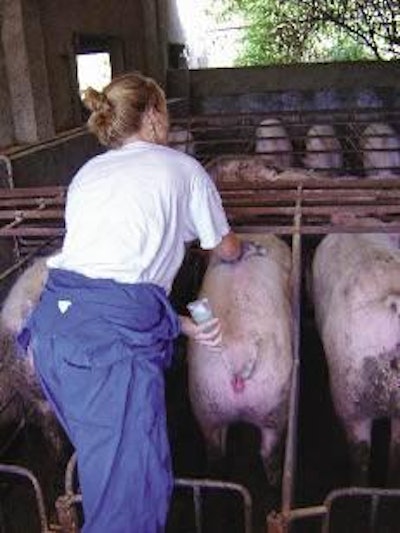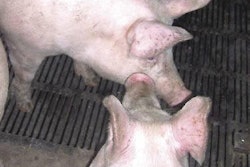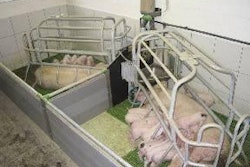
Previous articles in this series have discussed the choices facing a herd that wants to change to a system of batch management for its farrowings. We have looked at whether groups should be formed on a weekly cycle or every 2 or more weeks, also the rotation time of the farrowing facility for the batch management system chosen. This month, our topic is the effect of each batch management system on the workload for the unit.
The work in any sow herd rotates around the 3 fundamental activities of weaning, mating and farrowing. The main activity that determines how the time will be spent on the unit is always the weaning of the sows. Once you know that they are weaned in Week 1, it is clear you will need to breed them in Week 2. This is always so, with no dependence on the kind of batch management that is used.
But there will be a distinct difference between batch management systems according to the time of farrowing.
Batch management every week
Say we are weaning (and therefore breeding) sows in one-week batches so farrowings also take place on a weekly basis. In this situation, the 3 basic occupations of the farm will occur every week.
Now we can contrast that with the weekly distribution of main duties in other systems, being those where the mating of sows is done at intervals of more than one week. Probably the easiest example to illustrate the change in how labour is distributed by week considers the system of batch management every 2 weeks.
Batches every 2 weeks
Consider a herd that has been newly stocked with animals for piglet production. Because it will breed its sows every 2 weeks, the distribution of the 3 main activities will be as shown in Table 1 .
Starting on Week 1, breeding occurs in the odd weeks (Weeks 1/3/5/7/9 and so on). As gestation lasts 114-115 days (16.5 weeks), a Batch 1 mated in Week 1 will farrow 16 weeks later in Week 17. That is the same week in which Batch 9 will be mated for the first time.
In this situation, matings and farrowings will happen at the same week. Weaning always occurs in the week before mating, of course. The Table demonstrates that a new cycle starts in Week 21 with the re-breeding of Batch 1. This happens because the sows were weaned after 21 days, resulting in a cycle length of 20 weeks.
On a 4-weeks cycle
The same sequence will happen when the system forms a batch every 4 weeks, but now we have half the number of batches to deal with each week as Table 2 shows.
Four batches will have gone through the system after 16 weeks. Therefore, Week 17 sees the breeding of Batch 5 and this coincides with the farrowing of Batch 1. Weaning occurs one week and breeding + farrowing happen in the next one. After that there are 2 weeks without a main activity.
Again we can see that a new cycle is started after 20 weeks, so Week 21 brings the re-breeding of Batch 1.
Every 3 weeks
A different distribution of activities will take place where sows are mated every 3 weeks (so in Weeks 1/4/7/10 and so on). Farrowing of Batch 1 will not be until Week 17.
As Table 3 shows, there are no matings in that week. This system of batch management therefore gives a sequence in which mating and farrowing happen in consecutive weeks, with weaning in the week before mating as always.
The example shown also illustrates how the reproductive cycle is extended by one week as the sows are weaned at 28 days. It can be seen that a new cycle begins here after 21 weeks (Week 22) with the re-breeding of Batch 1.
With 5-weeks batching
In the case that sows are mated every 5 weeks (in Weeks 1/6/11/16) there is a similar situation to having batches every 3 weeks. Week 16 once again is the time to re-breed the first sows and yet Batch 1 does not farrow until the following week.
So the sequence with this system has weaning, breeding and farrowing in consecutive weeks. But after each farrowing there will be 2 weeks with none of the 3 main activities (Table 4 ).
We return to a reproductive cycle of 20 weeks due to the fact that sows are weaned at 21 days. The next cycle starts after 20 weeks (Week 21) as the Batch-1 sows are re-bred.
After looking at the different batch management options, it can be concluded that the only factor dictating whether farrowings and matings coincide in the same week is the breeding interval. An interval relating to even weeks (batches every 2 and 4 weeks) means that both mating and farrowing activities will occur in the same week. Batches every 3 and 5 weeks so that the breeding interval is in odd weeks changes this so these 2 main activities never coincide. PIGI
(NEXT IN THE SERIES: How this distribution of main activities affects the secondary occupations on the unit.)

















